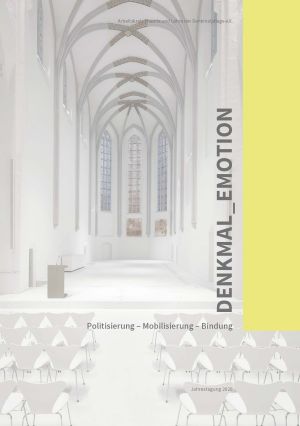Zitationsvorschlag
Veröffentlicht
Von Entzücken bis Entsetzen
Emotionen in denkmalrechtlichen Entscheidungsprozessen
The relevance of emotions to legal decision-making processes in heritage conservation has so far received little scholarly attention. What significance do the emotions that owners or outside observers feel for objects or places hold for their formal listing as monuments? Which feelings play a primary role in questions of how to handle a monument? Can the shape and form of an historic building be offensive or injurious, and if so, does this give the offended party a right to demand its removal? In the past, legislators occasionally referred to monuments as artefacts that “impress upon the sentiment and temper”. Today’s state conservation laws, however, give little indication as to whether a listed monument should inspire positive or negative emotions, or whether the conservation authorities ought to take the feelings of those involved in the listing process into consideration when making their decisions. At first glance, it seems obvious that juridical constructs such as “the public interest” and “reasonable imposition” include an emotional component, one which can encompass both the delight that historically significant places and objects evoke, and the occasional dismay they might inspire. A closer look, however, reveals that emotions – depending on the type of listing and the parties involved – are at times addressed, but at other times ignored in the decision-making process. Using selected examples drawn from administrative practice and case law, the examination undertaken here illustrates the level of significance that the emotional interests of owners, political representatives, historical witnesses and concerned citizens are assigned in judicial decisions about the listing of historic monuments and their handling.








